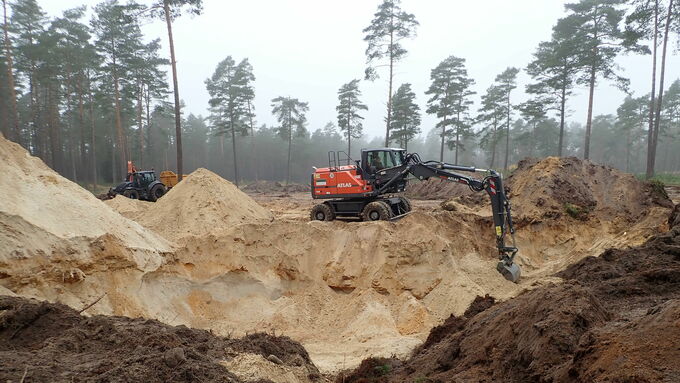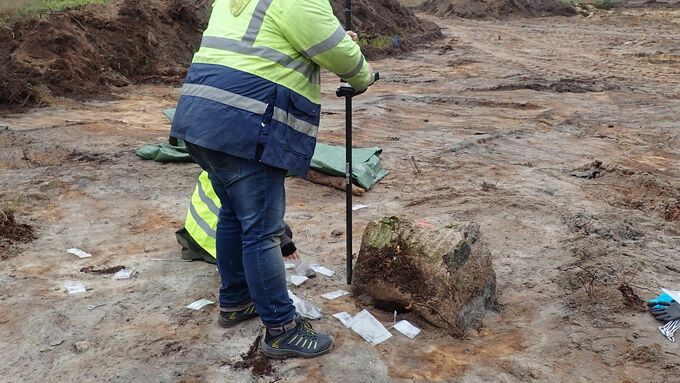An excavator digs a depression in the sandy soil and deposits the sand sideways. © Thomas Kutter, NLWKN
main content
Project of the month
#8/2021 Lueneburg Heath
Lüneburg Heath: Large-scale expansion of habitat type 2330 in Heimbuch Forest
The SAC ‘Lüneburger Heide’ covers 23,286 hectares. The nature reserve of the same name has existed since 1922 and is thus one of the oldest nature reserves in Germany. Two thirds of the nature reserve is forested. Within the forest areas, there are formerly open inland dunes. Today, habitat type 2330 - Inland dunes with open Corynephorus and Agrostis grasslands - is one of the most endangered habitat types in Lower Saxony and thus has the highest priority for conservation and development measures.
Together with our local partner, the Sellhorn Forestry Office, several measures for the expansion of habitat type 2330 had already been implemented within the framework of the LIFE IP Atlantic Region DE. In the winter of 2020/2021, in addition to the release of the ‘Barrler Düne’ in the district Heidekreis (C79), a contiguous area of six hectares at ‘Großer Sand’ in the Heimbuch Forest (district of Harburg, C83) could be cleared.
Before the implementation of the measure, the area ‘Im Großen Sand’ had a sparse stand of pine trees. Originally, within the framework of the LIFE IP it had been planned to restore about 1.5 hectares of inland dune habitat types in this area. In the course of planning, however, it became clear that it was also possible to think much bigger. The Sellhorn forestry office agreed to increase the area for this action, so that the thinning out of the forest stand was further increased to about six hectares.
After further thinning out of the forest stand, the area first was worked with a forestry mulcher in winter 2019/2020 in order to shred the remaining woody material and the growth of black cherry. The topsoil was then removed down to the mineral base to expose the dune sand again. In the process, the areas with already existing valuable vegetation were left out. Open sand patches with silver grass, heath areas or occurrences of crowberry were marked on the area for reasons of precaution. From here, the area is to be colonised later by the target vegetation. Tree stumps which had been removed were placed individually or in piles and mounds in the area as structural elements.
Where to put the soil?
However, the measure first required a building permit to be submitted to the responsible district. The LIFE IP team at the NLWKN and the Sellhorn forestry office aimed at re-integrating the removed topsoil as close to the site as possible in order to avoid climate-damaging transports of hundreds of truckloads of soil material. The district of Harburg therefore approved the incorporation of the topsoil into a ‘sand-covered embankment’ in the boundary area – a method that the people responsible for the measures had been able to learn about from the colleagues of ‘LIFE Trockenrasen’ in Brandenburg before implementation.
On the trail of the reindeer hunters
In the north-west of the project area, there is a state-wide significant find from the Palaeolithic period. In this period, this dune range had already been present and had been used by reindeer hunters as a camp site. The site had been discovered in 1879 during forest surveys. The implementation of this action therefore had to be accompanied continously by archaeological work. During topsoil removal, the commissioned archaeologist discovered small stone chips in several places, indicating that reindeer hunters had made tools at the foot of the dunes.





